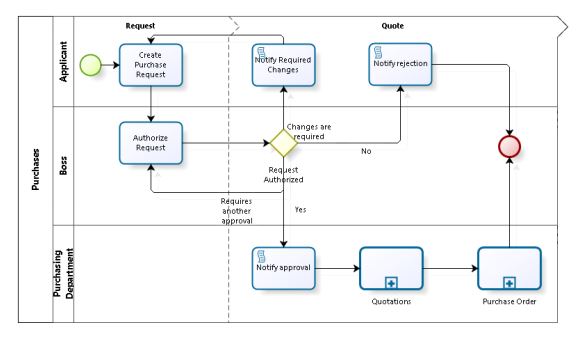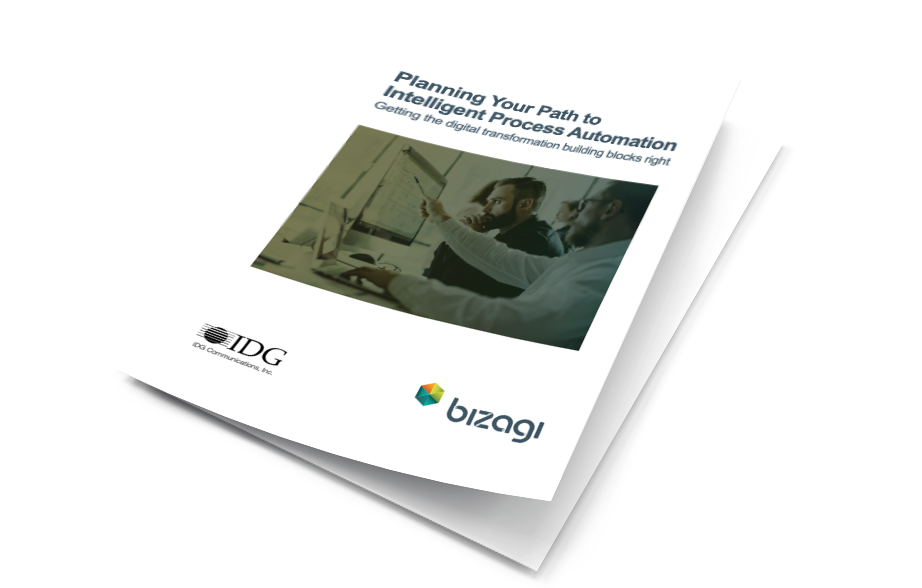5 Reasons for Automating the Procurement Process
Blog: Bizagi Blog
Automating the procurement process is an effective way to help a critical business function to operate more effectively. This is more relevant now than ever due to the unprecedented supply chain disruption caused by COVID-19.
Procurement is key to mitigating the impact on the business.
Procurement teams are routinely dependent on paper-based processes or outdated
systems that aren’t open to change. With those systems it’s impossible to gain
insight into the thousands of suppliers they work with and assess business continuity.
Digital technologies can help procurement to increase collaboration and engagement along the entire procurement value chain, including planning, sourcing, contract management, order delivery, payment control and supplier management.
Read on for five key benefits you can reap from automating the procurement process:
1. Maximize cost-saving
According to Chief Procurement Officers (CPOs) in a Deloitte study, 74% of CPOs cite cost savings as the primary driver for performance measurement. Automation can help significantly when it comes to the procurement process, which historically is very paper-heavy, manual, and arduous. This could cost companies money in two ways. Firstly, the long procurement cycle meant that money got caught up in lengthy reviews and evaluations. Additionally, the daunting tasks of filling out procurement forms meant that employees would avoid engaging with procurement, so discount opportunities from bulk buying or using preferred suppliers for cost-savings were often overlooked.
This was the case for pharmaceutical company Takeda, who found it difficult to get business users to engage with their three-page form when they needed to source a supplier or execute a transaction. Avoidance of the procurement process meant that they were unable to deliver the full potential of cost savings and couldn’t uncover the biggest value opportunities for the organization.
In just 10 weeks, they transformed the form into a web-based
questionnaire, supported by workflows and business rules in Bizagi. They also automated
procurement’s supplier request processes and their operational support process.
This made it faster and easier for employees to engage with procurement, which
increased the potential for cost-saving across the business and ultimately
improved the perception of procurement to the 30,000 employees at Takeda.

2. Ease employee engagement
As demonstrated by Takeda, an overly complex procurement process can put employees off using the procurement center for purchases. Organizations should aim to make the process as user-friendly as possible to maximize employee engagement and help the organization to make more efficient purchase decisions.
A global logistics organization has built a custom, fully integrated automated Procurement Support Portal using Bizagi Sites. The Global Procurement Helpdesk leverages Bizagi Sites as a front-end user interface for 230,000 employees who create or request a ticket.
The easier it is for employees to interact with the
procurement department, the more likely they are to use it, which means all
purchases can be tracked and the organization can take advantage of discounts.
3. Reduce cycle time
Introducing process automation to the procurement process will help to shorten the procurement lifecycle by ensuring it is as efficient as possible. APQC’s Sourcing and Procurement: Blueprint for Success report showed that there can be a significant difference in cycle times, with top performers taking an average of 5 hours to place a purchase order, while bottom performers can take up to 48 hours.
Modeling the process prior to automation will help to eliminate any bottlenecks in the process and ensure that all the necessary steps are adhered to. Once the process is streamlined, automation can add efficiency by automating tasks within the evaluation processes which previously would have been completed manually, such as uploading request forms to the system, distributing contracts, and confirming orders. There is a significant amount of administration involved in the procurement process, so freeing employees up from these tasks mean they can focus on other value-add tasks.
Process automation also reduced the chance of errors and omissions when collating information, so the back-and-forth of correcting mistakes is eliminated. The entire process will be completed faster and more efficiently, so your organization can benefit from faster purchase order processing, faster approvals, and ultimately faster receipt of goods.
4. Minimize risk
APQC reports that “Within procurement, the use of an approved vendor list is one key practice for driving consistent processes. The approved vendor list contains all suppliers that will be accepted to do business with the organization.”
A leading global chemical manufacturer ensures that their approved vendor list is always up-to-date as part of their risk management exercises. The procurement team runs an evaluation of all their providers by sending out an annual questionnaire to assess if the providers are reliable and good value for money. Bizagi helps to drive this process by gathering the information and automatically updating the rating based on the information provided by employees.
However, having a reliable vendor list is only the first step to minimizing risk. Organizations also need to ensure that employees are compliant with the procurement process. According to APQC’s research, only 43% of organizations have documented consequences for applying noncompliant sourcing processes to a very great extent. These maverick buyers can have a significant impact on the bottom line, with the total cost for the procurement process group per $1000 purchases for those with a significant number of maverick buyers being $40.42, compared to just $21.73 for the top performers who adhere to the procurement process, nearly double the amount.
5. Eliminate transaction disputes
With multiple stakeholders involved, including procurement management, evaluation committee, arbitrator, and vendors, it’s important for all parties to be able to have access to a single point of truth. This is particularly important if a transaction dispute should arise.
Bizagi orchestrates all systems and provides a central location to reference the process to ensure that goods have been delivered in time, to the desired standard, and payments have been settled. The process is mapped out for complete end-to-end visibility, so every point in the process can be reviewed with ease. Automated audits also guarantee that all documents from purchase requests through to approved invoices are referenceable.
Find out more about Bizagi’s finance solutions, including transfers, purchase orders, and approvals, and gain insight into how to instill automation across your organization in our whitepaper, Planning Your Path to Intelligent Automation.
The post 5 Reasons for Automating the Procurement Process appeared first on Bizagi Blog – Ideas for Delivering Digital Transformation.
Leave a Comment
You must be logged in to post a comment.









